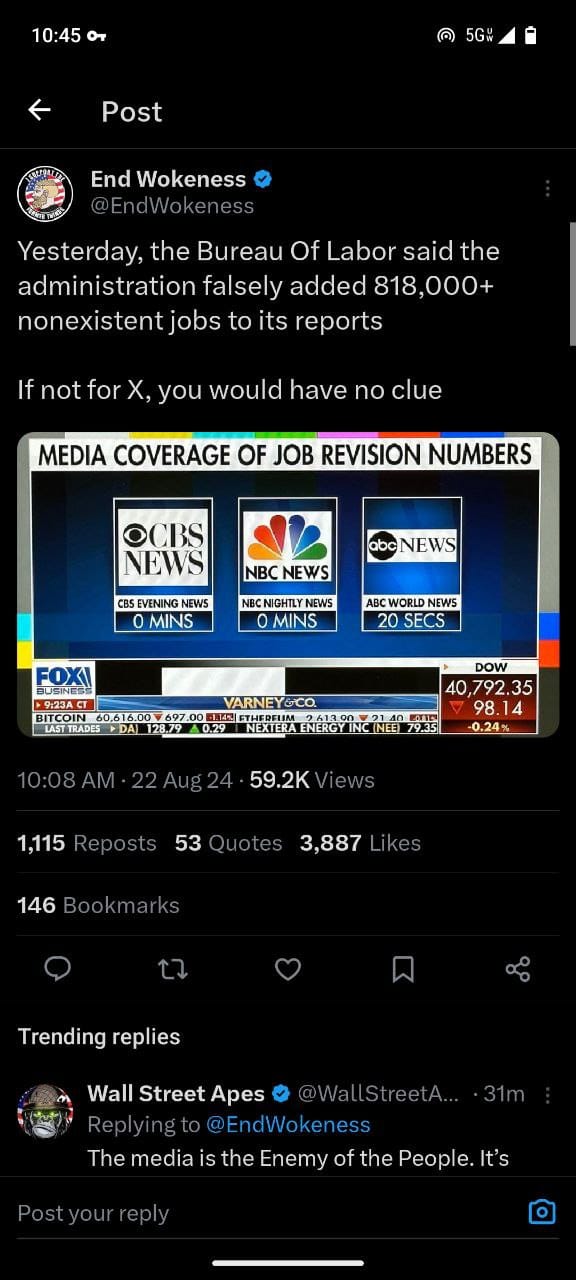Media Bias, Censorship, and the Legalization of Propaganda: A Complex Landscape


The interplay of media bias, censorship, and the dissemination of government-produced information has been a contentious issue, particularly following legislative changes during the Obama administration. This article explores these dynamics and their implications for public discourse.
Media Bias and Its Impact
Media bias can shape public perception by influencing which stories are reported and how they are framed. This bias often aligns with the political leanings of media outlets, leading to selective reporting and reinforcing existing viewpoints. For instance, studies have shown that media exposure can significantly sway voter opinions and reinforce partisan divides.During major events, media bias can lead to underreporting or skewed representation of critical issues. This was evident in the recent controversy over the Bureau of Labor Statistics' job revision numbers, where some outlets provided minimal coverage, prompting accusations of bias and censorship.
Censorship and Government Influence
Censorship concerns often arise when media outlets or governments limit access to information. The Obama administration faced criticism for its approach to media relations, with accusations of unprecedented secrecy and efforts to control the narrative. Journalists reported difficulties in obtaining information and noted a tendency for the administration to manage its image meticulously.

Smith-Mundt Modernization Act of 2012
A significant legislative change that fueled debates about government influence over information was the Smith-Mundt Modernization Act of 2012. This act amended the United States Information and Educational Exchange Act of 1948, allowing materials intended for foreign audiences to be available domestically.
Contrary to some claims, this did not legalize propaganda within the U.S. but lifted restrictions on the domestic dissemination of government-funded media like Voice of America. Critics worried this could lead to the use of such information to influence American public opinion, while proponents argued it increased transparency and accountability.

Background of the Smith-Mundt Modernization Act
The Smith-Mundt Act originally prohibited the domestic dissemination of materials produced by the U.S. government for foreign audiences. This was intended to protect the U.S. public from government propaganda and to support the domestic media industry. However, with the rise of digital media and global connectivity, the restrictions were seen as outdated.
Legislative Changes
In 2012, the Smith-Mundt Modernization Act was passed as part of the National Defense Authorization Act. It allowed U.S. government-produced content, such as that from Voice of America and Radio Free Europe, to be accessed within the United States upon request. The amendment aimed to increase transparency and allow Americans to see the content their tax dollars were funding.
Controversy and Misinterpretation
- Criticism: Critics feared the changes would enable the government to influence domestic public opinion through propaganda. Concerns were raised about the potential misuse of government-produced content to sway public perceptions.
- Support: Proponents argued that the amendment simply modernized outdated restrictions and provided transparency. They emphasized that the content was already accessible online and that the change allowed for more open access.
- Clarification: The amendment did not authorize new propaganda efforts directed at U.S. citizens. It only lifted the ban on domestic access to content intended for foreign audiences, maintaining legal standards for accuracy and objectivity.
Impact on Media and Public Perception
The debate around the Smith-Mundt Modernization Act highlights broader concerns about media bias and government influence. While the legislative change aimed to improve transparency, it also sparked fears about the potential for government overreach in shaping public opinion.In summary, while the 2012 amendment to the Smith-Mundt Act was intended to modernize and increase access to government-produced content, it also raised significant concerns about media influence and the potential for domestic propaganda. Understanding these dynamics is crucial for informed public discourse and media literacy.
Conclusion
The intersection of media bias, censorship, and government communication strategies presents a complex landscape that influences public discourse. Understanding these dynamics is crucial for navigating the information environment and ensuring informed public debate. As media consumption continues to evolve, the role of diverse and independent news sources becomes increasingly important in fostering a well-rounded understanding of global events.






